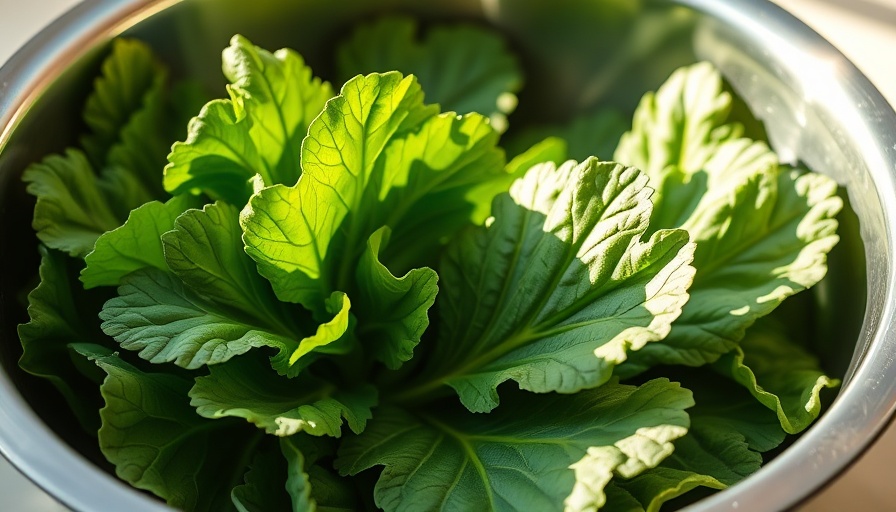
The Resurgence of Collard Greens: A Nutritious Culinary Gem
If you think collard greens belong only on Southern dinner tables, think again. This resilient vegetable, once sidelined in modern cuisine, is gaining newfound appreciation across America and beyond. As we become more aware of nutritional benefits and diverse cooking methods, collards are making a comeback, shining a light on their deep cultural heritage and culinary versatility.
What Are Collard Greens?
Collard greens (Brassica oleracea) are part of the cabbage family, growing broad, lush, dark green leaves that don’t toughen as they mature. With roots tracing back to ancient times in Africa, these greens are renowned for their cold-hardiness and ability to thrive in a variety of climates. They thrive where many leafy greens fail, making them an ideal choice for gardeners looking to maximize their growing season.
Historical Roots: A Cultural Tapestry
The story of collard greens is deeply woven into the fabric of Southern cooking, rooted in the culinary traditions of African slaves who adapted their home cooking to utilize locally available ingredients. The phrase "the mess of greens" refers to a traditional Southern meal consisting of collards simmered with pork to create a rich, flavorful broth known as "pot likker". This dish not only nourished the body but also fostered community, making collard greens an essential part of Southern heritage. As society shifts towards a more health-conscious mindset, many are reexamining the nutritional values these greens bring to the table, proving that they are not only delicious but also vital to our diets.
Growing Your Own Collard Greens: A Beginner's Guide
Whether you're new to gardening or a seasoned pro, growing collards is straightforward and rewarding. They thrive in well-draining soil rich in organic material, such as compost. Plant your collards in early spring or fall, as they prefer cooler temperatures which lend a sweeter flavor to the leaves. In warmer regions, collards can endure summer's heat with the aid of mulching, which helps retain moisture while suppressing weeds. Aim for spacing 18 to 24 inches apart, allowing each plant plenty of room to grow.
Benefits of Growing Collards
The advantages to growing collards extend beyond their historical and culinary significance. A single serving of boiled collard greens is a powerhouse of nutrition, packed with an astonishing 1,045% of the daily recommended intake of Vitamin K, along with substantial amounts of Vitamins A and C. This nutritious profile, combined with their adaptability to various climates, makes collards not just an ideal crop but a fantastic addition to your pantry.
Cooking With Collard Greens: Endless Possibilities
The versatility of collard greens cannot be overstated. They can be used in salads, stews, and inventive dishes as a substitute for tortillas or bread. Younger leaves can add a crisp texture to salads, while mature leaves excel when braised or cooked slowly. Add some smoked turkey or ham hock for traditional flavor, or experiment with spices from different culinary traditions.
Conclusion: Join the Collard Renaissance!
Collard greens are more than just a side dish; they're a window into history and a source of nutrition that we ignore at our peril. Whether you're tempted to start a garden or simply add these greens to your weekly meal prep, embracing collards can enrich your diet and your culinary repertoire. So grab some seeds, start planting, and elevate your meals with this incredible vegetable!
 Add Row
Add Row  Add
Add 




Write A Comment